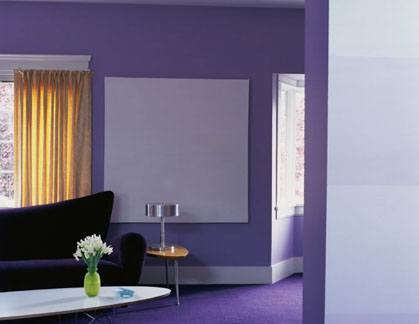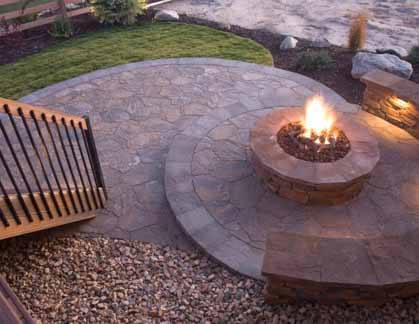Interior Design
School and Career Guide
Check out interior design school, career and industry information to help you reach your goals.

Overview
One part artist, one part business professional and one part circus ringmaster, an interior designer is more than a face with an eye for beauty. From sketching, designing and arranging beautiful spaces to shopping for furniture and household accessories, there's no shortage of excitement in an interior design career. A job in this field can provide opportunities to travel and work with a variety of people. Interior designers must be able to manage people, budgets and client relationships—all while designing spaces that are attractive, functional, and meet building and safety codes.
Traits of Successful Interior Designers
A good eye for design and aesthetics is a given for someone who is an interior designer at heart. But what puts the best designers ahead of the pack? Here are a few traits that successful designers possess.
- Communication skills to work effectively with teams of engineers, architects and builders
- Technical skills to use complex drawing software and read blueprints
- Flexibility to work nontraditional hours and travel to design sites to meet with clients
- Detail and precision skills for measuring spaces and creating drawings
- Troubleshooting skills to minimize schedule delays and budgeting issues
Types of Interior Designers
Design school graduates have many career options. These are just a few areas of focus.
- Universal designers increase the accessibility of spaces for seniors and those with special needs.
- Sustainable designers focus on improvements in energy, water efficiencies and indoor air quality. Some designers in this segment are LEED certified.
- Kitchen and bath designers have expertise in cabinets, fixtures, appliances, plumbing and electrical solutions.
- Lighting designers create special atmospheres in homes, offices and public spaces such as museums and hospitals.
Source: Bureau of Labor Statistics, U.S. Department of Labor, Occupational Outlook Handbook, Interior Designers.

Degrees
You'll most likely encounter these courses in an interior design degree program.
What to Look for in a Program
When you're choosing an interior design training program, the most important thing is to find a school that will help you reach your goals. Although getting licensed is not a requirement in any state, Nevada, Louisiana, Florida, and Washington, DC, require a license for commercial work—and 20 states have a title act in place. This means you can't use the title "registered interior designer" unless you are registered in your state of practice. Still, a degree, NCIDQ certification, and experience can set you apart and work to your advantage.
Interior Design Education Requirements
To pursue a career in interior design, the educational requirements vary depending on the region. While some states may not have specific interior design licenses, obtaining the NCIDQ (National Council for Interior Design Qualification) certification is often recommended. Generally, aspiring interior designers are advised to complete at least an associate's degree in interior design or a related field. However, higher-level degrees may qualify for a shorter experience requirement. It's essential to research and understand the specific licensing requirements and certifications relevant to your location.
Typical Educational Routes
If you're interested in a career in interior design, you have several educational paths from which to choose.
Certificate in Interior Design
- No formal enrollment requirements
- Requires two to three years of coursework
- Qualifies graduates to work in entry-level positions under supervision of experienced interior designer
Associate's Degree
- No formal enrollment requirements
- Requires two to three years of coursework
- Qualifies graduates to work as an assistant to an interior designer
- Provides a foundation for entering a bachelor's degree program
Bachelor's Degree
- Requires four years of coursework
- Usually falls within science, applied arts or fine arts departments
- Includes coursework in interior architecture or industrial design
- Qualifies graduates to enter a one- to three-year formal design apprenticeship program at an architecture or design firm
Master's Degree and Doctorate
- Less common than a bachelor's degree in interior design
- Number of programs available is increasing
- Focuses of study include industrial design, education, and fine art
What Are Interior Design Training Courses Like?
Although each school's curriculum varies, here are some subjects you will likely study in an interior design training program:
- Color theory
- Computer-aided drafting
- Creating specifications for interior construction
- Ethics
- Graphic communication
- History of interior design/architecture
- Interior design business practices
- Interior design specialties
- Interior design studio
- Lighting
- Materials, methods, and finishes
- Problem-solving
- Safety and building codes
- Space planning
- Two- and three-dimensional design
Interior Designer vs Interior Decorator
Although the terms interior designer and interior decorator are used interchangeably, they have different responsibilities. Are you more interested in redecorating a room than large-scale renovations? Then a career in interior decorating may appeal to you the most. No degrees or formal education are necessary to be an interior decorator. These distinctions will help determine the best fit for you.
| INTERIOR DESIGNER | INTERIOR DECORATOR |
|---|---|
| Formal training required | No formal training required, although classes are available |
| Focuses on renovations, structural changes, spatial planning, and functional design | Focuses on aesthetics of style, color, furniture, fabrics, accessories, and room layout |
| Hired for commercial work | Hired for residential work |
| Interacts with contractors and architects | Interact with homeowners, furniture makers, painters, and other industry professionals |
| Works as an apprentice | Apprenticeship not required |
| Licensing required in most states | Licensing not required |

Online vs Campus
Is getting a degree online the right program for you?
Study for an Interior Design Degree Online
Online learning is a great option for people who are unable to make it to campus—whether because of their job, family demands or other reasons—but it's not for everyone. Before you enroll in online classes, you should consider whether online learning is right for you. Students who are disciplined and self-starters can thrive in this environment. Those who are chronic procrastinators should proceed with caution. Earning your interior design degree online requires a regular time commitment.
Is an Online Interior Design Degree Program for You?
Each school is different, so check with any schools you are considering to find out about their program requirements. In some programs, you may still have regularly scheduled video lectures or student chat sessions or forums. In other programs, you can participate in these kinds of activities on your own schedule. Some interior design schools will allow you to view an online course demo before enrolling. Ask admissions officers if a demo is available.
If you're sure you'll do well in an online format, you'll be pleased to know that you can earn your associate's or bachelor's degree online.
If you're eager to enter the field quickly, you'll find certificate programs online in such areas of interior design as these:
- Floral design
- Furniture design
- Home remodeling
- Interior decorating
- Landscaping
- Residential planning
Online Interior Design School Accreditation
Because online interior design degrees are still fairly new, you'll want to make sure that the program you are considering is accredited. Look for accreditation from these agencies:
- National Association of Schools of Art and Design: They accredit approximately 300 colleges, universities and independent schools with programs in art and design.
- Council for Interior Design Accreditation: Accredit around 150 bachelor's or master's degree interior design programs nationally.
- National Kitchen & Bath Association: If you specialize in one of these areas, they accredit certificate, associate's and bachelor's degree-level programs.
You should also verify that your online interior design degree will qualify you for the NCIDQ certification exam and for licensure in your state.

Salary
Find out what to expect in an interior design salary.
If there is a theme for aspiring interior designers to note, it's this: an interior design career offers many rewards (financial and otherwise), but you have to be willing to pay your dues in entry-level jobs before you work your way up.
Interior Designer Salaries by Top Industries
Most people think of interior designers as self-employed professionals (about 32% are) who help couples and families re-design and re-furnish the interior of their homes. But interior designers work in larger capacity and actually cross all types of industries. The U.S. Bureau of Labor Statistics (BLS) 2023 Occupational Employment Statistics lists the median annual salaries for interior designers based on the top metropolitan areas where they work:
| Metro Area | Median Annual Salary |
|---|---|
| San Francisco-Oakland-Hayward, CA | $79,080 |
| San Jose-Sunnyvale-Santa Clara, CA | $79,000 |
| Los Angeles-Long Beach-Anaheim, CA | $78,380 |
| Boston-Cambridge-Nashua, MA-NH | $77,130 |
| Seattle-Tacoma-Bellevue, WA | $76,550 |
| Rochester, MN | $76,260 |
| Sacramento--Roseville--Arden-Arcade, CA | $75,200 |
| New York-Newark-Jersey City, NY-NJ-PA | $74,660 |
| Dallas-Fort Worth-Arlington, TX | $73,860 |
| Washington-Arlington-Alexandria, DC-VA-MD-WV | $73,510 |
Job Growth and Outlook for Interior Designers
The BLS predicts 3.9% job growth for interior designers through 2032. About 32% of designers are self-employed and 13% work in architectural and engineering related industries and since these areas are anticipated to grow, these professionals may see solid job growth.
Interior designers who specialize in a particular area of the industry, such as kitchens, bathrooms or in sustainable interior design, could benefit from being an expert and may use their knowledge of products and standards to better help customers and clients fulfill their needs.

About the Job
Find out what an interior design job is all about.
A good interior designer manages people, budgets and client relationships all while designing spaces that are attractive, functional and meet building and safety codes. Professionals in an interior design career need organizational skills and business know-how. So it's not surprising that getting an interior design degree is quickly becoming essential for those wishing to enter the industry. A degree is also a licensure requirement in many states.
Job Responsibilities
Depending on the project, interior designers do the following tasks on a day-to-day basis:
- Finding new clients and determining their needs
- Bidding on projects
- Making a project schedule and budget
- Determining the area's main function, look, and furnishings
- Researching building and safety codes
- Drawing design plans by hand or using computer-aided design (CAD)
- Reading blueprints or drawings
- Picking furniture, wall finishes, lighting and kitchen, and bathroom fixtures
- Placing orders for materials
- Supervising installation of materials
- Working closely with clients, architects, engineers, and builders
Skills Needed for the Job
- Artistic Ability and Style – You will need to provide sketches of your proposed designs for a space. CAD training may also come in handy, since the interior design process often involves using computer programs to create two and three-dimensional renderings. You will choose colors, furniture and materials to complement the design, as well as suit your client's needs for function, durability and accessibility.
- Teamwork Ability – In an interior design job, you'll communicate with clients to assess what they want and need in a space, and then present your ideas for meeting those goals in a compelling way. You'll also need to communicate with vendors and contractors. Your responsibilities also include coordinating with architects, electricians, plumbers, and others to complete the job in a timely and cost-effective manner.
- Organizational Skills – Since interior designers complete a wide range of tasks and work with many different people, organizational skills are important. You are responsible for keeping the project on budget and on schedule. You will need to document your process and the products used, and manage contracts and negotiations on your client's behalf.
Steps to Becoming an Interior Designer
Comparing design schools and determining the right one for you is an important first step on your journey to an interior design career. Once you've gotten enough work experience and feel confident about what you've learned, it's time to take the National Council for Interior Design Qualification (NCIDQ) certification exam. The final step to becoming an interior designer is getting licensed. Not all states require licensure, so research your state's requirements.
Source: Bureau of Labor Statistics, Interior Designers.
Categories
Interior Design Education & Career Guide
- An Interior Designer Talks About Her Chosen Career
- Do You Need a License to Become an Interior Designer?
- Focusing Your Career on Home Interior Design
- Getting Interior Design Job Experience
- Interior Decorating Careers
- Interior Design Career Outlook
- Interior Design Certification: NCIDQ Exam
- Interior Design School and Career Guide
- Interior Designer Profile
- Prepare for Interior Design School the Right Way
- Residential Design Program Must-Haves: Efficiency and Sustainability
- Sustainable Interior Design
- Taking Your Interior Design Experience Outdoors
- Types of Interior Design
You may also like

Residential Design Program Must-Haves: Efficiency and Sustainability

Taking Your Interior Design Experience Outdoors

